
4-26 #LetGo : Intel is allegedly set to cut over 21,000 people; Xiaomi has created a dedicated Chip Platform Department within its product team; Apple is reportedly planning to switch assembly of all iPhones for the US market to India; etc.

Following the recent U.S. export restrictions on Nvidia H20, Huawei appears poised to fill the gap in China’s AI chip market. The company is allegedly to begin mass shipments of its Ascend 910C as early as May 2025. Huawei’s 910C may be more of an architectural upgrade than a game-changing breakthrough, as it is essentially a combination of two 910B processors. By merging them into one single package, the 910C claims to deliver performance on par with NVIDIA’s H100, which was banned from shipping to China in 2022. The latest U.S. export curbs on advanced AI chips like NVIDIA’s H20, AMD’s MI308, and Intel’s Gaudi are opening the door for Huawei and domestic players like Moore Threads and Iluvatar CoreX. (CN Beta, TrendForce, Reuters, Tom’s Hardware, CSIS)
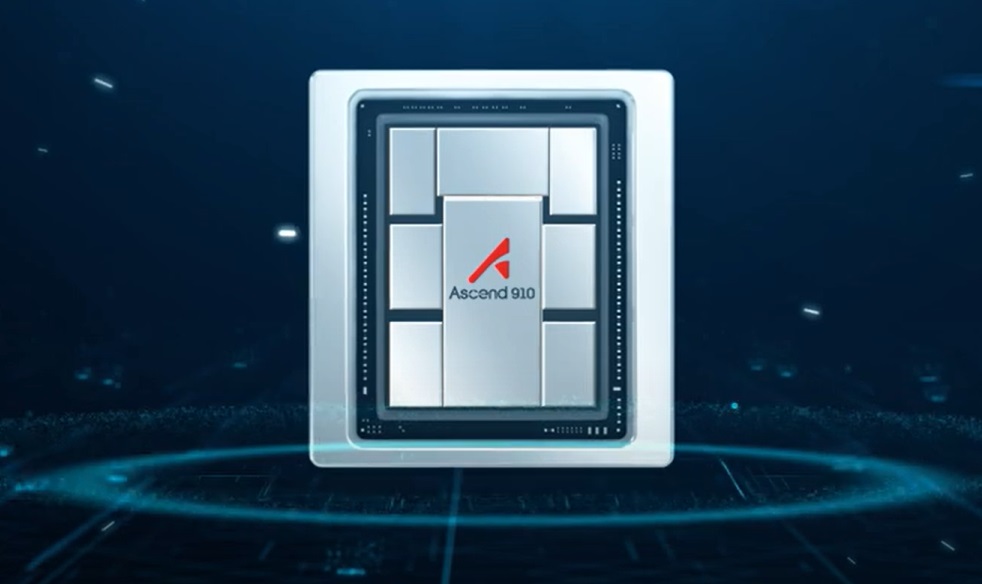
Intel is allegedly set to cut over 21,000 people, or roughly 20% of its workforce. With the layoffs, the company’s CEO Lip-Bu Tan aims to “streamline management and rebuild an engineering-driven culture”. The company had around 108,900 employees at the end of 2024 after it announced 15,000 job cuts in Aug 2024.(TechCrunch, Bloomberg, Yahoo)
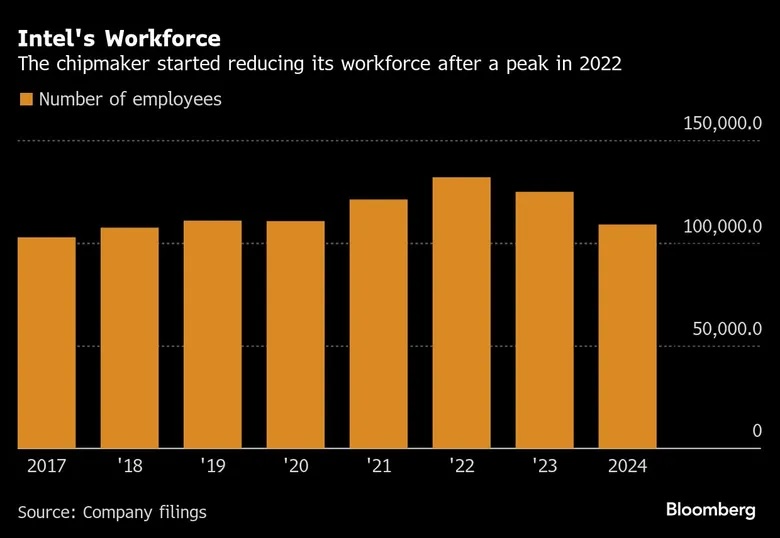
Xiaomi is restructuring its mobile division ahead of the launch of its first in-house smartphone SoC, branded “Xuanjie”. The company has created a dedicated Chip Platform Department within its product team, appointing Qin Muyun as department head. Qin, who previously served as Senior Director of Product Marketing at Qualcomm, brings years of semiconductor experience and has been with Xiaomi since at least 2021. Xiaomi began its semiconductor journey in 2014 with the launch of Beijing Pinecone Electronics, focused on mobile SoC development. Its first chip, the Surge S1, debuted in 2017 on the Mi 5C using a 28nm process. However, poor modem support and limited network compatibility hampered its market performance. The subsequent Surge S2 never made it past tape-out, prompting Xiaomi to halt its full-scale SoC ambitions. Xiaomi pivoted to specialized chips instead—developing image processors (Surge C1), power management ICs (Surge P1/P2), and battery controllers (Surge G1). These lower-risk projects helped the company sharpen its chip design capabilities while preparing for a future SoC comeback.(CN Beta, Sina, AAStock, Techpowerup, IT Home, Digitimes)
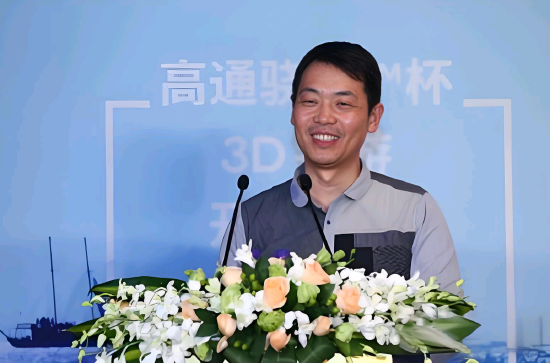
Intel has reportedly placed 2nm orders with TSMC for its upcoming Nova Lake CPUs, outsourcing the compute tile to TSMC. Intel has reportedly outsourced Nova Lake’s compute tile to TSMC, where it will leverage the foundry’s 2nm process. Apparently, Intel plans to go all-out with the Taiwanese giant, which raises doubts about the fate of Intel’s 18A process node, which is “advertised” to be better than TSMC N2. TSMC’s 2nm process has received much attention from industry giants, given that Apple, AMD, and now Intel are in the race to acquire the node. AMD recently announced that they were the first customer of 2nm, integrating the semiconductor for its 6th-generation EPYC “Venice” processors. Similarly, Apple plans to adopt the process for its A20 chip intended for the iPhone 18 series. (CN Beta, TweakTown, TrendForce, WCCFTech, UDN)
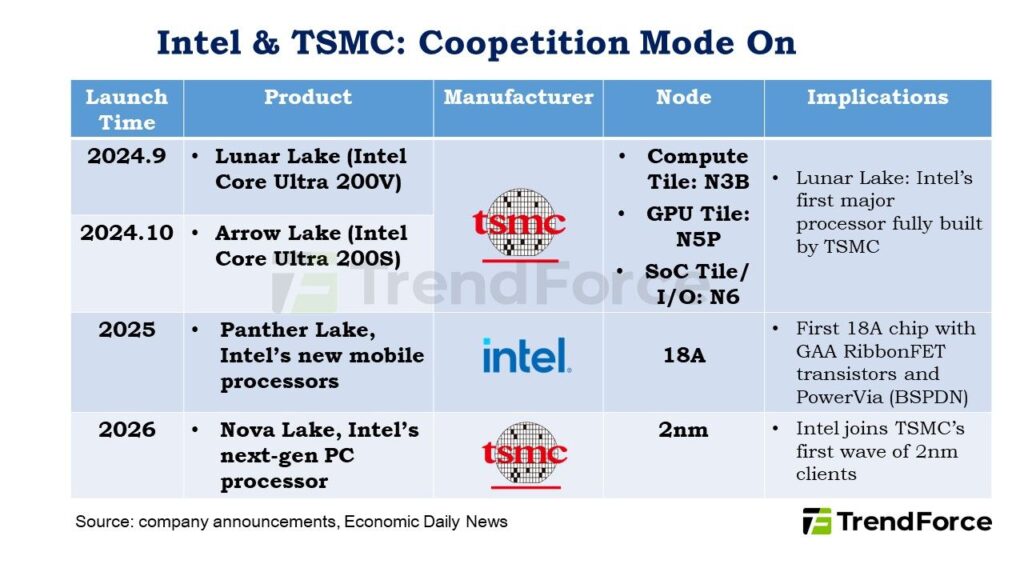
TSMC has teased its next-generation A14 process node that will enter planned production in 2028. A14 node will allow for highly advanced 1.4nm chips that are likely to be utilized for future generations of Apple silicon. Compared to TSMC’s N2 node, A14 promises up to 15% faster performance at the same power or up to 30% power savings at the same performance. A14 also boasts over 20% logic density improvement. TSMC said it is also evolving its TSMC NanoFlex standard cell architecture to NanoFlex Pro, enabling greater performance, power efficiency, and design flexibility. TSMC’s industry-leading 2nm process is set to enter volume production later 2025. Apple is not expected to introduce devices using TSMC’s 2nm (N2) process node until 2026, suggesting that the iPhone 18 series will be first to adopt the technology in Apple’s A20 chip.(MacRumors, Business Wire, Tom’s Hardware)

Fujitsu and RIKEN (a leading Japanese research institute) have announced that they’ve developed a new 256-qubit superconducting quantum computer, which significantly expands their quantum computing capabilities. Fujitsu said that the computer is at the RIKEN RQC-FUJITSU Collaboration Center and implements high-density implementation techniques. This new machine builds on a previous quantum computer that the pair developed, which had 64 qubits. With the fourfold increase in qubits, this computer will be able to perform analysis of larger molecules and help to demonstrate more advanced error correction algorithms. This new quantum computer won’t be monopolized by Fujitsu and RIKEN, and the pair has plans to give companies and research institutes from around the world access to the machine to advance their projects. It said access will be given to these entities during the fiscal 1Q25.(Neowin, Fujitsu)
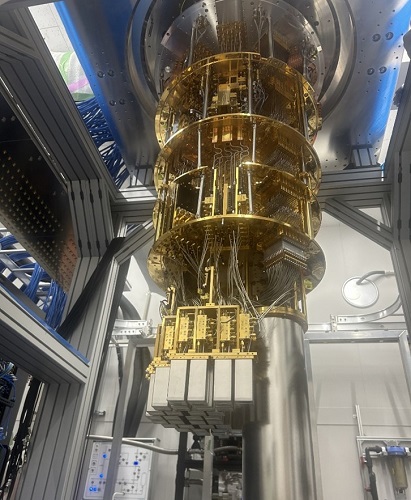

Samsung Display has reportedly started producing panels for the Flip 7 and Fold 7 in Apr 2025. Samsung Electronics will receive this and begin manufacturing foldable phones in May. Samsung Display mainly handles the front-end process in Korea (Asan) and the back-end process in Vietnam (Bac Ninh). The foldable OLEDs completed at its Vietnamese plant are sent to Samsung Electronics’ local factory. Samsung Electronics is expected to release a tri-fold phone and a budget foldable phone around 4Q25, which will allow Samsung Display to produce even more diverse foldable OLEDs. In addition, as Apple has tentatively decided to release a foldable iPhone starting in 2026, Samsung Display has been spurring its related business. Apple is said to have set the production volume of the first-generation foldable iPhone at around 10M units. (Android Authority, The Bell)

AUO Chairman and CSO Paul SL Peng has indicated that the idea of building in the US and shipping parts back across the Pacific “completely impractical”. Peng warned that most consumer electronics firms operate on razor-thin margins. Apart from TSMC’s 50% gross margin, most contract manufacturers operate at 3–4%, with panel makers often below 10%. AUO’s direct US exports total just USD200M—a small slice of its annual revenue. The real risk lies in clients’ US-bound shipments, which could expose up to 12% of AUO’s revenue, according to internal estimates. Peng said customers front-loaded orders ahead of tariff enforcement, distorting demand for 4Q24 and 1Q25. While 2Q25 inventory digestion was planned, it remains uncertain. He warned that tariffs have already disrupted the industry’s seasonal cadence and 2025 outlook. (CN Beta, Digitimes, Digitimes, UDN)
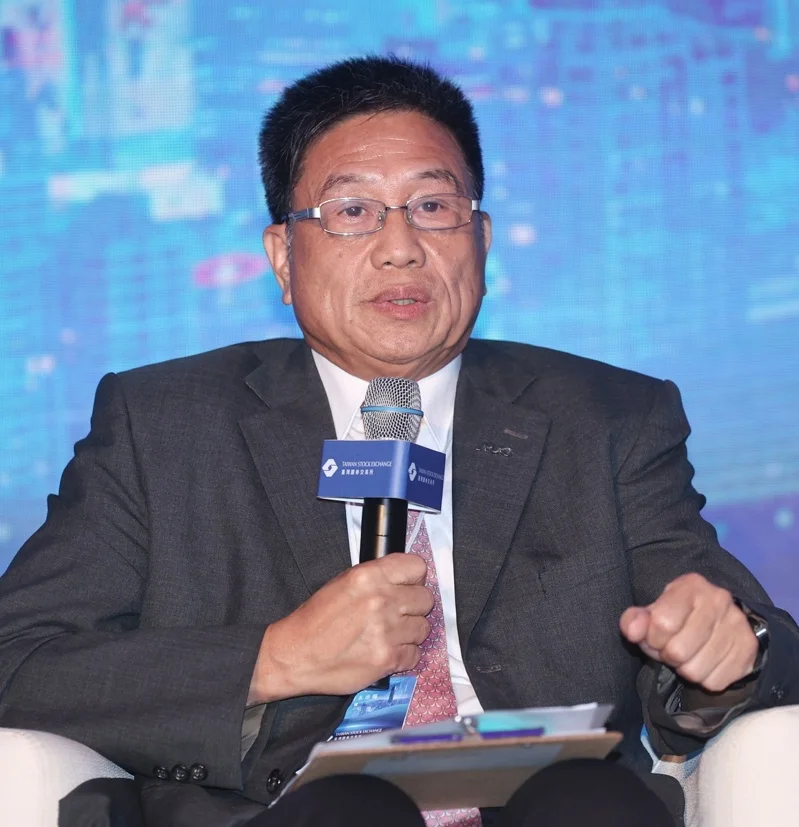
Samsung Display (SDC) has filed a fresh OLED patent infringement lawsuit against China’s BOE Technology, intensifying an already heated legal standoff between the world’s leading display makers. According to SDC, the infringing OLED panels were used in two high-profile Chinese smartphones—Nubia’s Z60 Ultra and Redmagic’s 9S Pro—released in Dec 2023 and Jul2024, respectively. Both devices feature 6.8” OLED displays that Samsung claims infringe on its proprietary technologies. To date, SDC has filed at least three IP lawsuits against BOE in US courts. The legal campaign began in Dec 2022 when SDC filed a complaint with the US International Trade Commission (ITC), alleging that BOE had infringed on patents related to the diamond pixel structure used in iPhone OLED screens.(Bloomberg Law, Android Headlines, Digitimes, SamMobile)

Stellantis says its solid-state batteries are getting closer to reality. The parent company of brands like Jeep, Dodge, Ram, and many others is working with startup Factorial on the new batteries, which have just been successfully validated for automotive use and will be installed in a demonstrator fleet in 2026. Stellantis and Factorial call the new packs Factorial Electrolyte System Technology (FEST) arguing that unlike conventional lithium-ion batteries, the solid-state batteries have higher density and can support faster charging, i.e., 90% in just 18 minutes at room temperature. Factorial’s technology uses a lithium-metal anode (the “positive” charge side of the battery), quasi-solid electrolyte, and high-capacity cathode (the “negative” side). Stellantis says its 77Ah FEST cells have demonstrated an energy density of 375Wh/kg with over 600 charging cycles, “a milestone for large-format lithium-metal solid-state battery”. In addition to faster charging speeds, the solid-state batteries can also deliver higher power output with discharge rates up to 4C, for greater EV performance.(The Verge, Reuters, Business Wire)


JEDEC, the international semiconductor industry standards organization, has officially released the next-generation high-bandwidth memory standard HBM4. JEDEC said that the advancement of HBM4 is crucial for applications that need to efficiently process large data sets and complex calculations, including generative AI, high-performance computing (HPC), high-end graphics cards and servers. Compared with the previous HBM3, HBM4 has made many improvements, including increased bandwidth, double the number of channels, power efficiency, compatibility and flexibility, directed refresh management (DRFM) and capacity. (CN Beta, TrendForce, JEDEC)


The University of Tokyo has unveiled a revolutionary 3D water-cooling system that harnesses the full power of water’s phase change, achieving up to 7x more efficient heat transfer. By integrating advanced microchannel geometry and capillary structures, their system reached a performance record, potentially setting the stage for the next leap in electronics and sustainable tech. This study describes a novel water-cooling system comprising three-dimensional microfluidic channel structures, utilizing a capillary structure and a manifold distribution layer. The researchers designed and fabricated various capillary geometries and studied their properties across a range of conditions. It was found that both the geometry of the microchannel, through which the coolant flows, and the manifold channels, which control the distribution of coolant, influence the thermal and hydraulic performance of the system. The measured ratio of useful cooling output to the required energy input, known as the coefficient of performance (COP), reached up to 105, representing a notable advance over conventional cooling techniques. (CN Beta, Eureka Alert, TechNews, Yahoo, SciTechDaily)
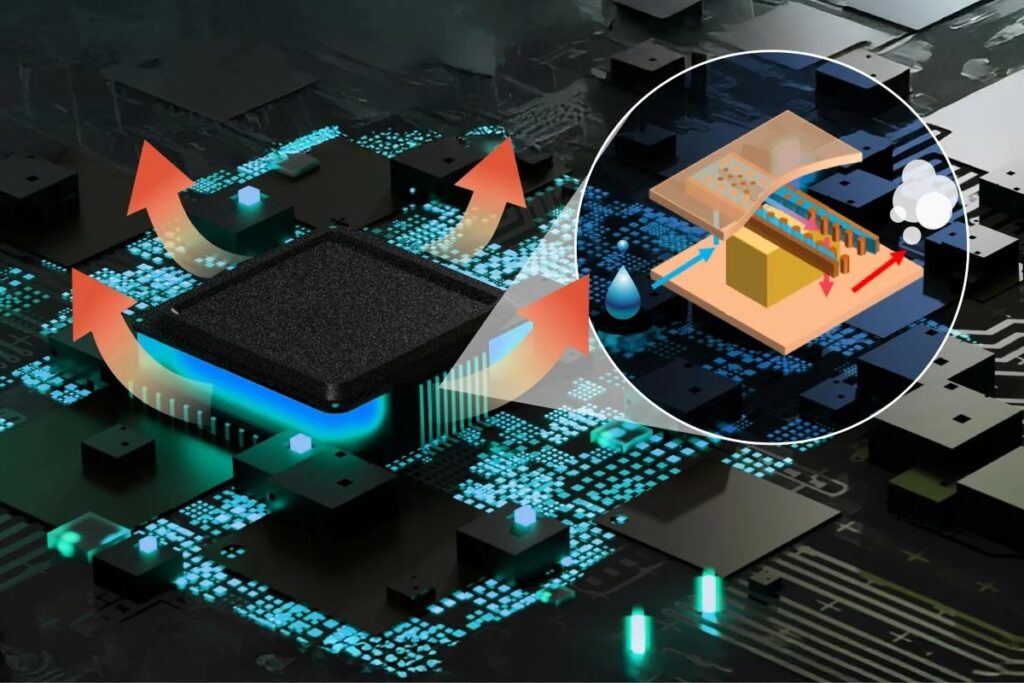

LG and Samsung have sued India’s government to quash a policy which increases payouts to electronic-waste recyclers, joining other major companies in contesting the country’s environmental rules citing business impact. The lawsuits mark an escalation of a standoff involving foreign companies’ and Prime Minister Narendra Modi’s government over its stance towards waste management practices. India is the third-biggest e-waste generator behind China and the U.S., but the government says only 43% of the country’s e-waste in 2024 was recycled and at least 80% of the sector comprises informal scrap dealers. Daikin, India’s Havells and Tata’s Voltas have already sued Modi’s administration.(Gizmo China, Reuters, Redseer, Policy Wire)
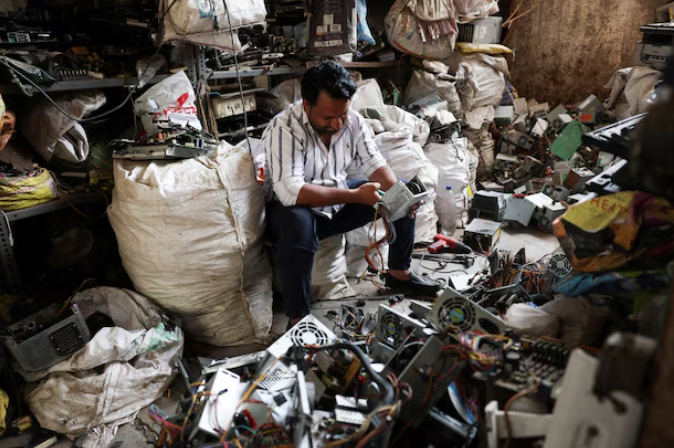
LG has announced that LG Electronics will terminate LG mobile phone software upgrades, update center, and LG Bridge (PC tool) services on 30 Jun 2025. After the service is terminated, LG will not provide software upgrades. If necessary, please upgrade the software before the termination on 30 Jun 2025. This means that LG phones in consumers’ hands will no longer enjoy software upgrades and related service support, and it also means that LG phones have completely bid farewell to the market.(CN Beta, LG)
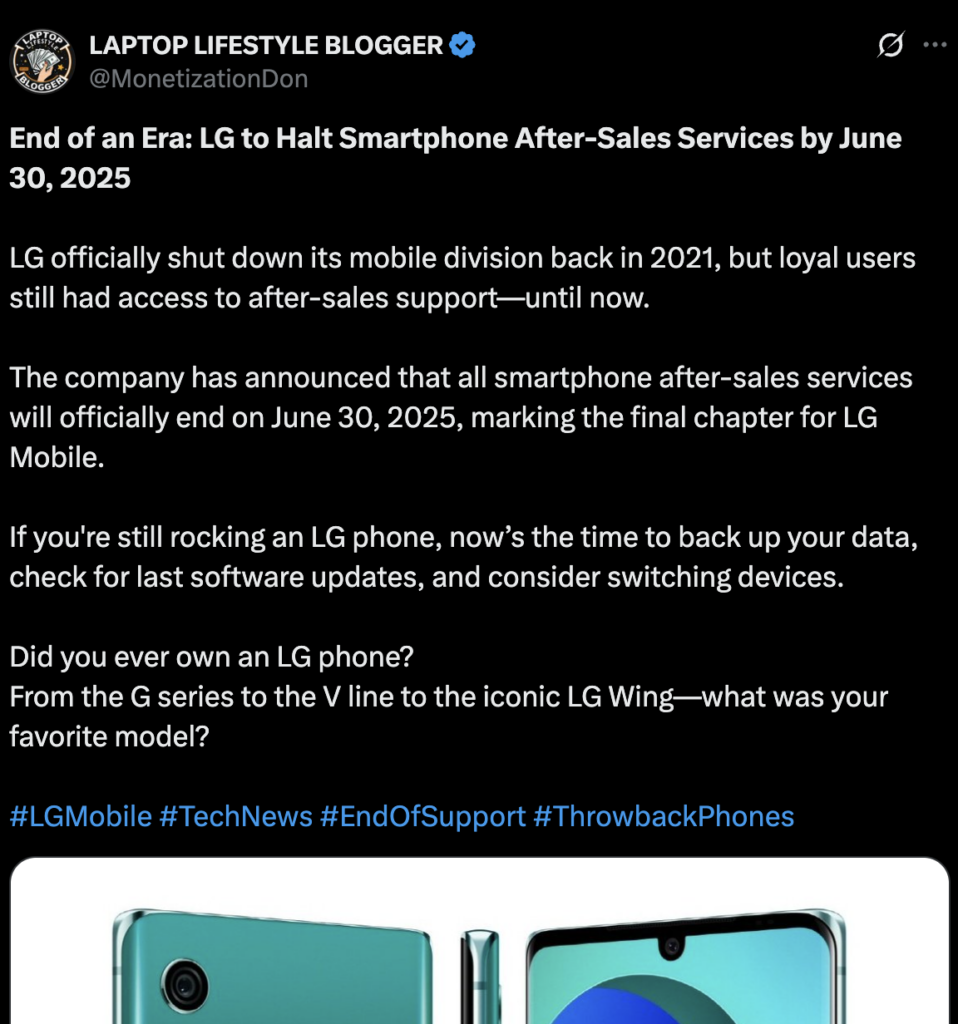
Counterpoint Research reveals that Apple iPhone 16e has made sufficient efforts to reduce dependency on the likes of Qualcomm and other third-party suppliers, not just to obtain better control over the hardware, but also to reduce its materials cost. Compared to the previous-generation 2022 iPhone SE and the iPhone 16, the iPhone 16e boasts the highest percentage of in-house parts. Additionally, this model allows the Apple to save USD10 per unit thanks to the custom C1 5G modem. Furthermore, the iPhone 16e flaunts 40% of the components made by Apple, with the remaining 60% sourced from third-party manufacturers. (CN Beta, Sina, WCCFtech, Counterpoint Research)
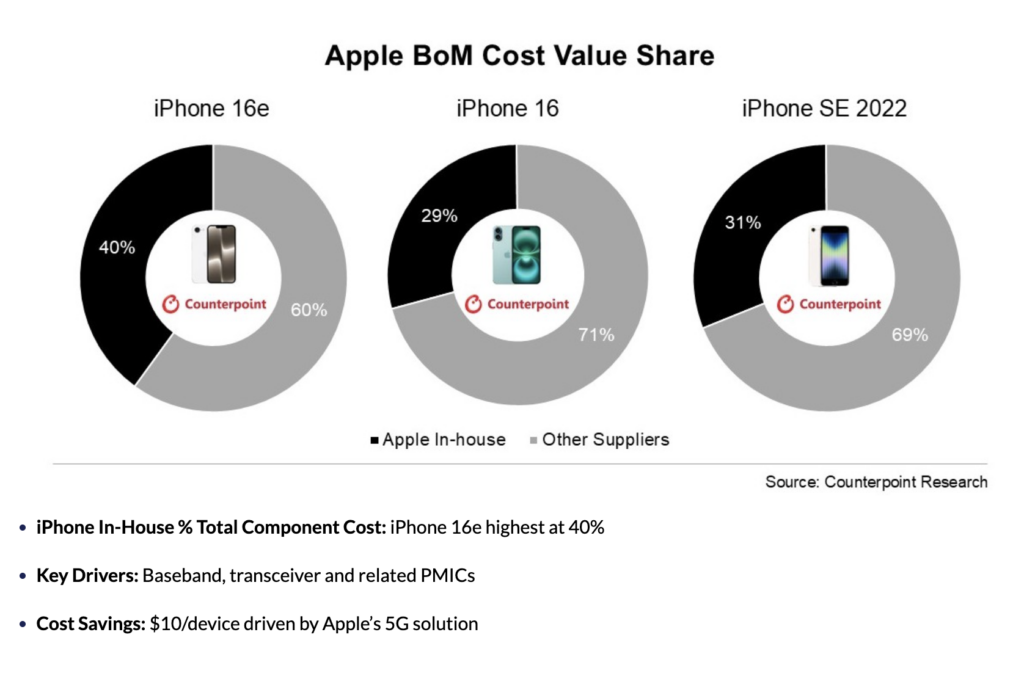
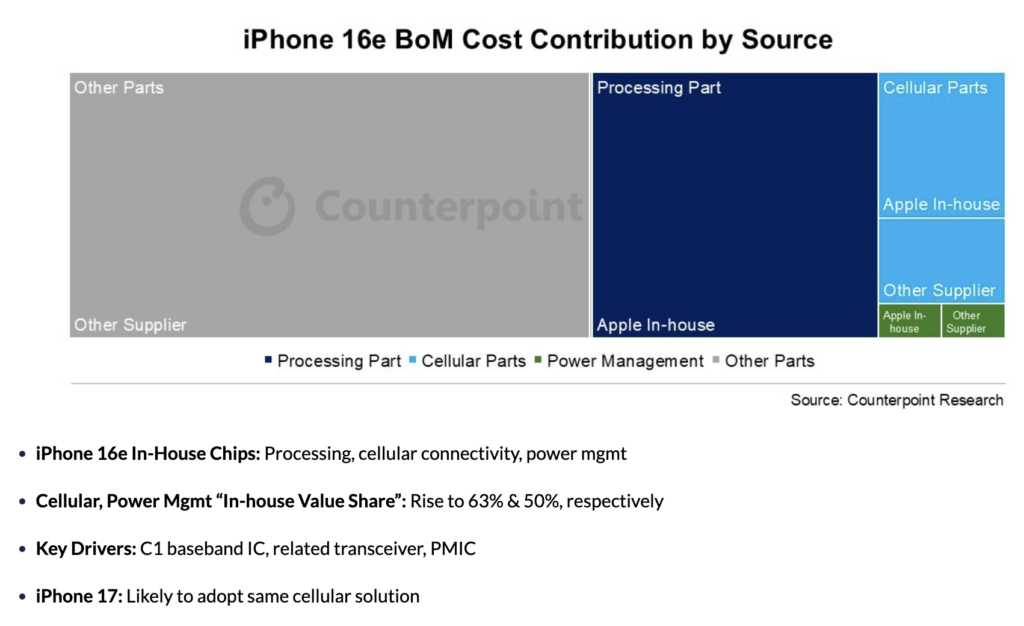
Alphabet pays Samsung Electronics an “enormous sum of money” every month to preinstall Google generative AI app, Gemini, on its phones and devices. The company began paying Samsung for Gemini in Jan 2025, according to Peter Fitzgerald, Google’s vice president of platforms and device partnerships, who has testified in Washington federal court as part of the Justice Department’s antitrust case. The contract, set to run at least 2 years, provides fixed monthly payments for each device that preinstalls Gemini and pays Samsung a percentage of the revenue Google earns from advertisements within the app. Samsung also received “competitive offers” from other AI companies, Fitzgerald acknowledged, including Microsoft, Meta Platforms and OpenAI to include their AI apps.(Android Authority, Android Headlines, Bloomberg)
Apple’s next-generation iPhone 17e is allegedly nearing the trial production stage. The iPhone 17e release date is currently understood to be late May 2026, although the exact date is unconfirmed. The iPhone 17e could go head-to-head for market share with another mid-range device from a rival smartphone vendor that typically releases new models around the same time. Possible rivals in China include Xiaomi, Redmi, and vivo. Starting at USD599, the iPhone 16e was released in late Feb 2025. (MacRumors, Weibo)

Apple is reportedly planning to switch assembly of all iPhones for the US market to India as the company seeks to reduce its reliance on a Chinese manufacturing base amid U.S. President Donald Trump’s trade war. Apple plans to source from India the more than 60M iPhones sold in the US annually by the end of 2026 – a commitment that would require more than doubling iPhone assembly in India. Apple has already been ramping up production in India and diverting iPhones assembled in the country to the US. The company’s main Indian suppliers, Foxconn and Tata, shipped almost USD2B worth of handsets to their largest market in March as Apple sought to offset the impact of looming tariffs. (Apple Insider, Financial Times, The Guardian, GSM Arena)
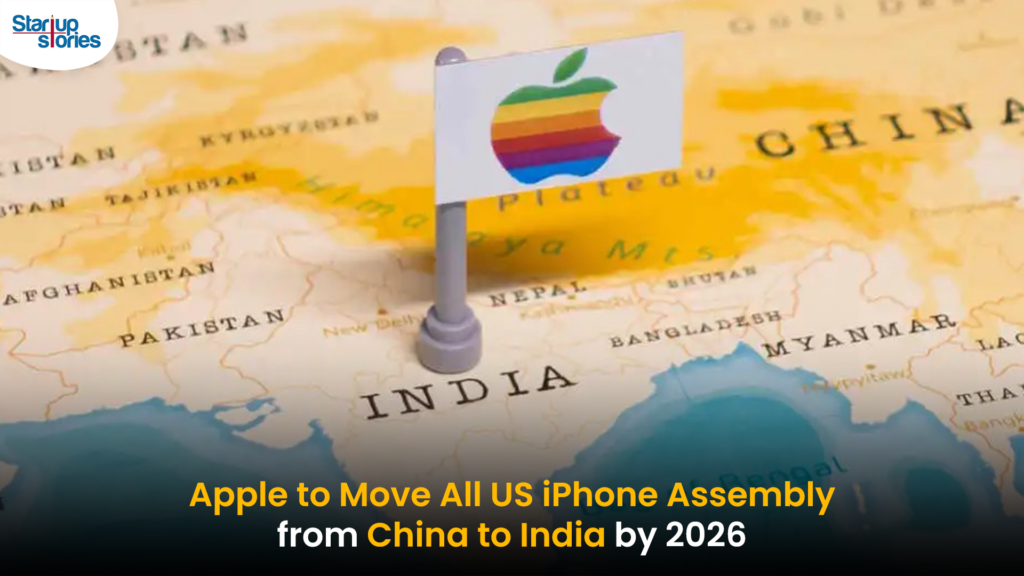
Counterpoint Research’s latest consumer survey in India highlights a strong preference for compact smartphones (74%), yet 68% of the respondents believe the market currently offers limited choices in this form factor. Consumers expect feature parity in compact devices — 88% are likely to purchase a compact smartphone if it delivers flagship-level performance, with more than half of the respondents not willing to compromise on processor performance and battery life when purchasing a compact smartphone. One-handed usability is considered a very important factor by respondents, with ease of holding and one-handed use (55%) being the main reasons for their preference for compact smartphones over larger ones. This is followed by greater comfort during extended use (49%). A whopping 71% of the respondents also want a good in-hand feel, while 69% pay attention to the look and feel of the smartphone when making the purchase decision. (GSM Arena, Times of India, Gadgets360, Counterpoint Research)
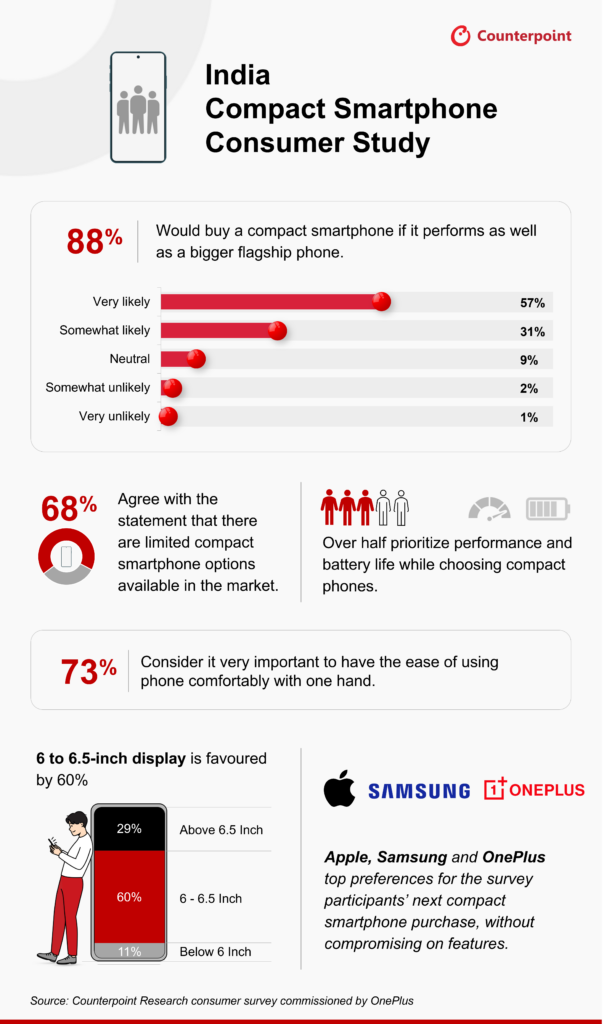
With the latest Google Play services update, Android is rolling out a new security feature that automatically restarts (or auto-reboots) devices that have been “locked for 3 consecutive days”. Google has updated the changelog entry to add that auto-reboot is “optional” when it comes in the “future”. This addresses some concern from people who run continuous Android devices. Restarting a device, returns it to a Before First Unlock (BFU) state where data is encrypted and harder to access as user has yet to enter her passcode, with biometric logins not yet enabled. (The Verge, 9to5Google)
Apple saw strong initial demand for iPhone 16e, reveals Consumer Intelligence Research Partners (CIRP) . Demand for current-gen iPhones was higher in 1Q25 – 74% of all phones Apple sold were part of the iPhone 16 family, compared with 68% share for the iPhone 15 lineup in 2024. The iPhone 16e, which is technically a midranger in the Apple portfolio with its USD600 price tag, had a 7% share of all sales. CIRP stated the percentage was better than the SE at launch. (GSM Arena, CIRP, Apple Insider)
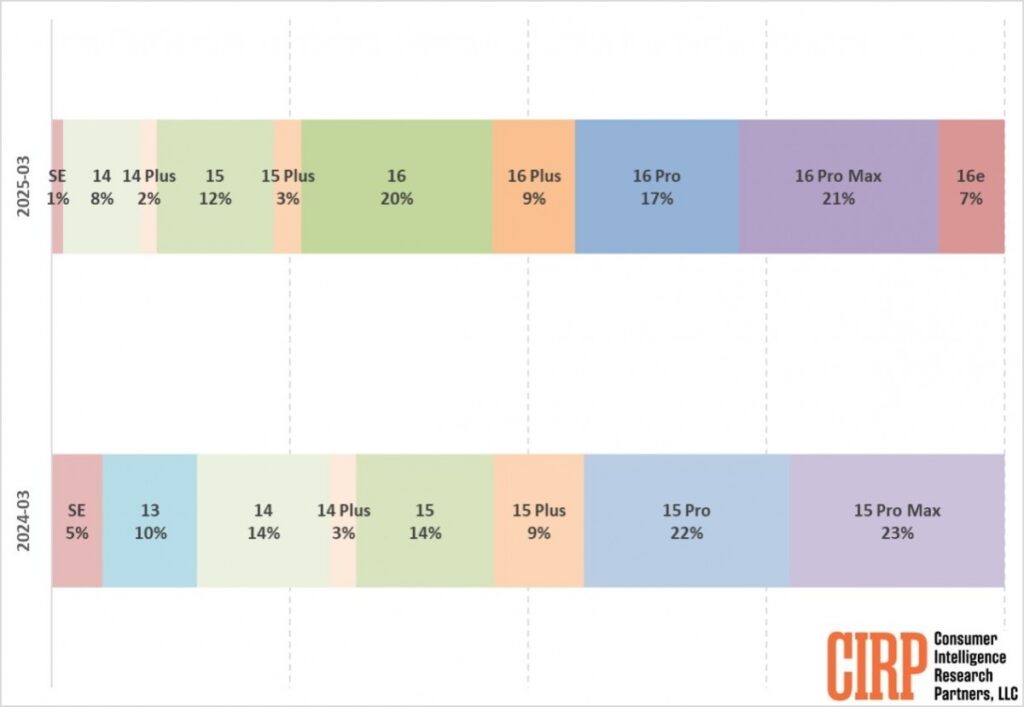

Samsung has announced its Screens Everywhere initiative, which essentially means putting 7” and 9” full-color touchscreens, called “AI Home screens”, in its large home appliances, such as washers, dryers, wall ovens, and cooktops. Samsung launched the first products sporting these new AI Home screens, including its Bespoke AI Home washer and dryer and a new model of its Family Hub smart fridge, the Bespoke Four Door French Door with AI Home. This one has a more modest 9” screen, compared to the 31” whopper on the Bespoke Family Hub Plus. According to Jeong Seung Moon, EVP and head of the R&D team for Digital Appliances Business at Samsung Electronics, the key benefits they see are “reducing inefficiencies in household tasks, enabling more intuitive use of appliance features, and improving accessibility”.(The Verge, Samsung)
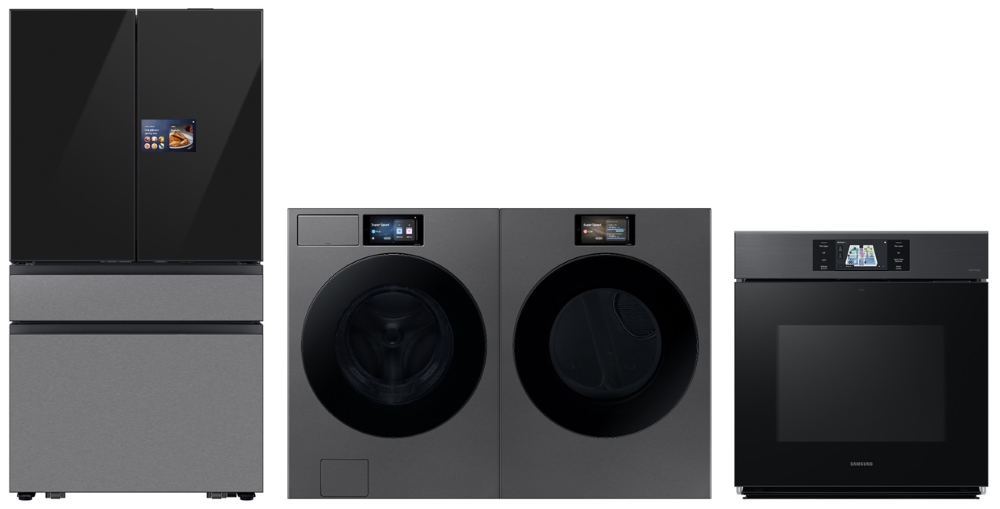

Samsung has its own version of Android Auto for Galaxy devices, “Samsung Auto”, which is an alternative to Android Auto that Samsung has built for Galaxy phones sold in China. The platform has apps and uses Bixby as its voice assistant. Samsung’s language in the app’s initial page suggests that it’s building on an existing feature. The Samsung Auto supports connecting to a vehicle with either Baidu CarLife+ or ICCOA CarLink, both supporting wired and wireless connections. Samsung has a full list of compatible vehicles within the app, though vehicles listed are either only sold in China, or are the version of that vehicle sold in China. Audi vehicles in China, for example, support Baidu CarLife+. (CN Beta, 9to5Google)


Meta was rolling out teen accounts for underage Facebook and Messenger users after coming to Instagram in 2024. To ensure it enrols as many teens as possible into these safer accounts, Meta has shared that it is reaching out to parents directly and utilizing AI to push suspected underage users onto a teen account. Meta has begun notifying parents directly on Instagram to help them learn how to have conversations with their kids about using their correct age online. To help with this, Meta has worked with paediatric psychologist Dr. Ann-Louise Lockhart compiled a list of tips for parents to help facilitate these conversations and how to check what age their children have used on their Instagram. Once kids have updated their settings, it will help Meta move them to a teen account for additional protections.(Neowin, Meta)

OpenAI CEO Sam Altman has recently admitted that people politely saying “please” and “thank you” to their AI chatbots is costing him “tens of millions of dollars”. While it may seem pointless to treat an AI chatbot with respect, some AI architects say it is an important move. Microsoft’s design manager Kurtis Beavers, for example, says proper etiquette “helps generate respectful, collaborative outputs”.(TechCrunch, Twitter, Futurism)

In a bid to inject AI into more of the programming process, OpenAI is launching Codex CLI, a coding “agent” designed to run locally from terminal software. Via Codex CLI, OpenAI’s models can write and edit code on a desktop and take certain actions, like moving files. Codex CLI appears to be a small step in the direction of OpenAI’s broader agentic coding vision. Recently, the company’s CFO, Sarah Friar, described what she called the “agentic software engineer”, a set of tools OpenAI intends to build that can take a project description for an app and effectively create it and even quality assurance test it. (TechCrunch, GitHub)
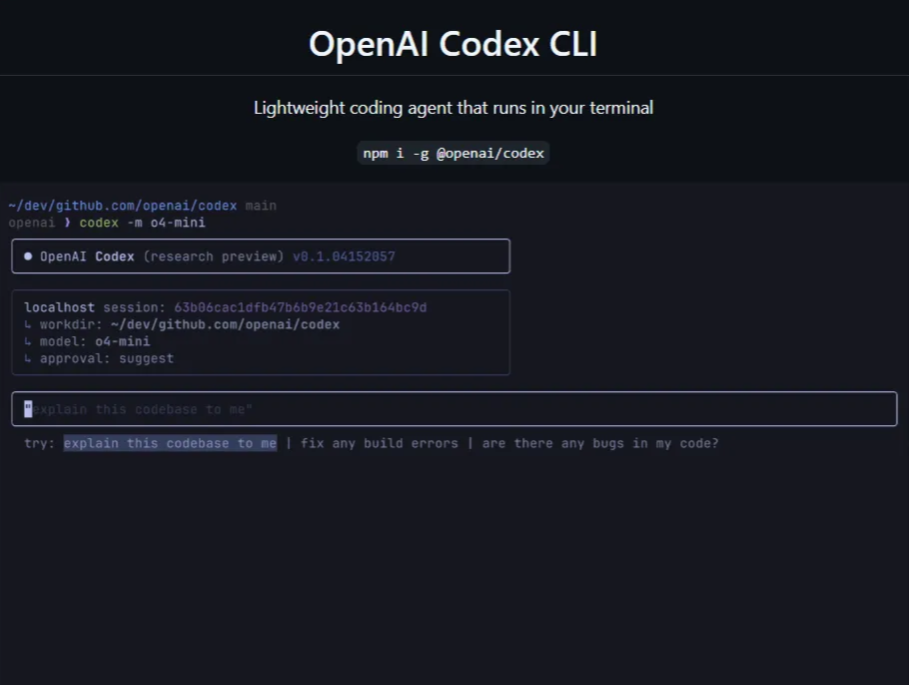
Google CEO Sundar Pichai has announced that Gemini will be available on tablets, cars, headphones, and watches later in 2025. Google’s Gemini chatbot is available on many Android phones and on the web, but the company still relies on Assistant for smartwatches, Android Auto, smart displays, and more.(Android Authority, Google)

Gemini, Google’s AI chatbot, had 350M monthly active users around the globe as of Mar 2025, according to internal data revealed in Google’s ongoing antitrust suit. Usage of Google’s AI offerings has exploded in the last year. Gemini had just 9M daily active users in Oct 2024, but in Mar 2025, the company reportedly logged 35M daily active users, according to its data. Gemini still lags behind the industry’s most popular AI tools, however. Google estimates that ChatGPT had roughly 600M monthly active users in Mar 2025, according to the company’s data shown in court. That puts ChatGPT on a similar user base to Meta AI, which CEO Mark Zuckerberg said in Sept 2025 was nearing 500M monthly users. (TechCrunch, The Information)
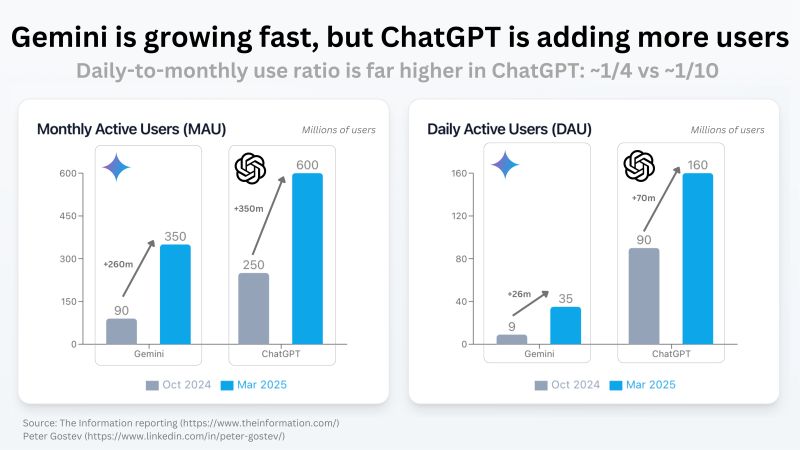
Anthropic is getting ready to introduce a new “voice mode” feature that could rival OpenAI’s similar option within ChatGPT. The AI voice assistant will reportedly live within its Claude AI chatbot and could start rolling out “as soon as Apr 2025”. Anthropic reportedly plans to roll out three English-language voices called Airy, Mellow, and Buttery.(Bloomberg, The Verge, Financial Times)


China-founded e-commerce sites Temu and Shein say they plan to raise prices for U.S. customers starting, a ripple effect from President Donald Trump’s attempts to correct the trade imbalance between the world’s two largest economies by imposing a sky-high tariff on goods shipped from China. Temu, which is owned by the Chinese e-commerce company PDD Holdings, and Shein, which is now based in Singapore, said in separate but nearly identical notices that their operating expenses have gone up “due to recent changes in global trade rules and tariffs”. (TechCrunch, Associated Press, USA Today)
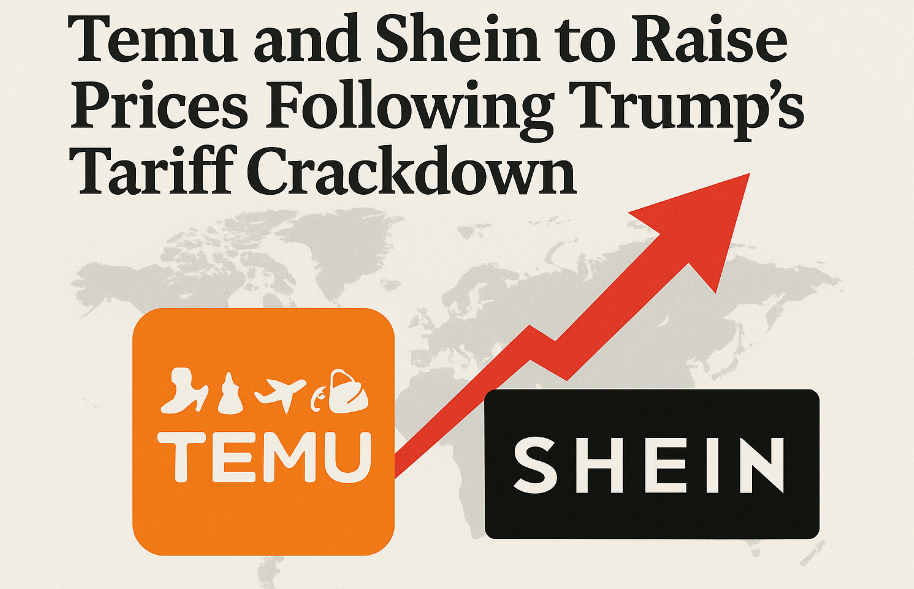
Flipkart, the Walmart-owned Indian e-commerce startup that closely fights Amazon in the South Asian market, is preparing to shift its headquarters back to India from Singapore as the company prepares to file for an IPO on Indian stock exchanges. Flipkart said the move “represents a natural evolution, aligning our holding structure with our core operations, the vast potential of the Indian economy”. Flipkart, which started its operations in 2007 in Bengaluru, moved its headquarters to Singapore in 2011 to attract more foreign investments, benefit from tax advantages, and better navigate bureaucratic hurdles and political challenges in India. (TechCrunch, Yahoo, India Today)